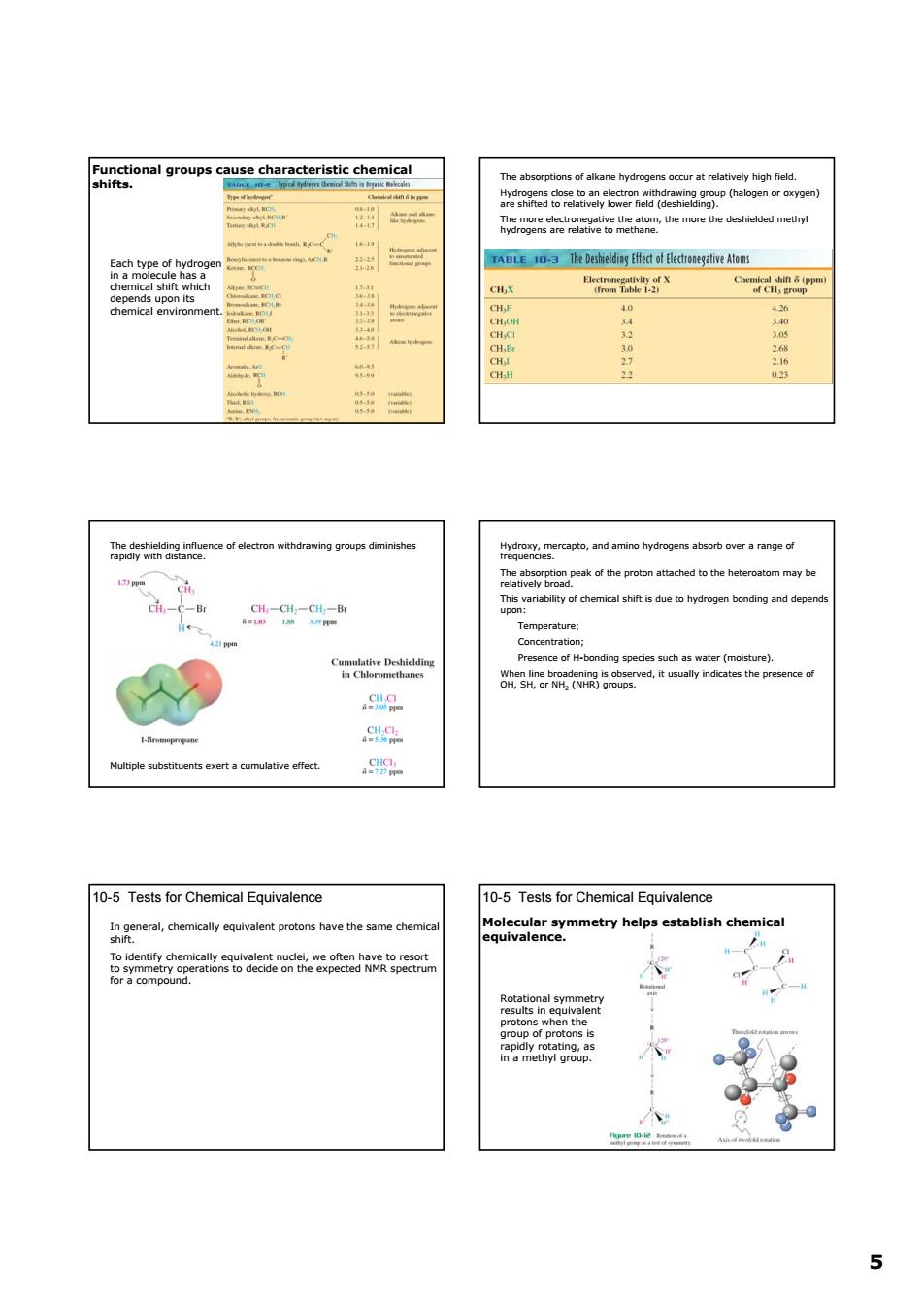正在加载图片...

ise characteristic chemica I shi ce of c nithdraming groups d c w--- S48 10-5 Tests for Chemical Equivalence 10-5 Tests for Chemical Equivalence haeneral,chemkalyequnaentproto mmtry hep et chica 55 Functional groups cause characteristic chemical shifts. Each type of hydrogen in a molecule has a chemical shift which depends upon its chemical environment. The absorptions of alkane hydrogens occur at relatively high field. Hydrogens close to an electron withdrawing group (halogen or oxygen) are shifted to relatively lower field (deshielding). The more electronegative the atom, the more the deshielded methyl hydrogens are relative to methane. The deshielding influence of electron withdrawing groups diminishes rapidly with distance. Multiple substituents exert a cumulative effect. Hydroxy, mercapto, and amino hydrogens absorb over a range of frequencies. The absorption peak of the proton attached to the heteroatom may be relatively broad. This variability of chemical shift is due to hydrogen bonding and depends upon: Temperature; Concentration; Presence of H-bonding species such as water (moisture). When line broadening is observed, it usually indicates the presence of OH, SH, or NH2 (NHR) groups. 10-5 Tests for Chemical Equivalence In general, chemically equivalent protons have the same chemical shift. To identify chemically equivalent nuclei, we often have to resort to symmetry operations to decide on the expected NMR spectrum for a compound. 10-5 Tests for Chemical Equivalence Molecular symmetry helps establish chemical equivalence. Rotational symmetry results in equivalent protons when the group of protons is rapidly rotating, as in a methyl group